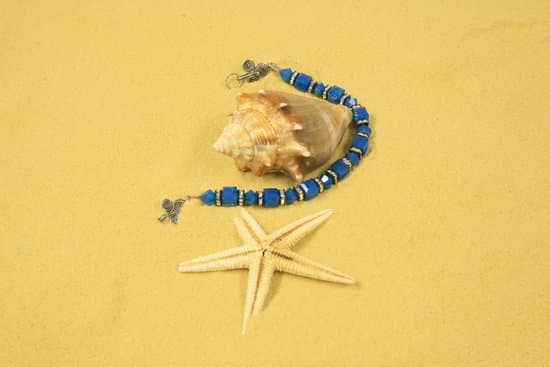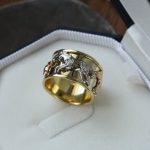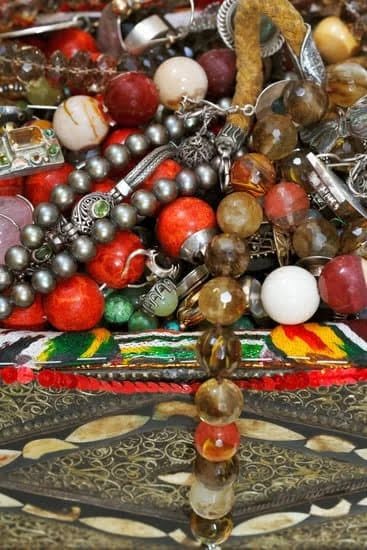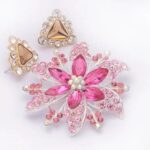Are you curious about how to start making fine jewelry? The art of crafting fine jewelry is a time-honored tradition that requires skill, precision, and creativity. In this article, we will explore the essential steps and techniques for getting started in the world of fine jewelry making. From finding inspiration to understanding the fundamentals and honing your skills, we will provide you with a comprehensive guide to kickstart your journey as a fine jewelry maker.
Before diving into the technical aspects of jewelry making, it is important to understand the artistry behind it. Fine jewelry is more than just a collection of precious stones and metals – it is an expression of creativity and sophistication. In this section, we will delve into the artistic aspects of fine jewelry making, setting the stage for your journey into this captivating craft.
Aspiring jewelry makers often find themselves drawn to various styles and techniques. Whether it’s classic elegance or modern avant-garde designs, finding inspiration is a crucial step in developing your unique style as a jeweler. In the following paragraphs, we will discuss how exploring different styles and techniques can not only spark inspiration but also help you define your signature aesthetic in the world of fine jewelry.
Finding Your Inspiration
When it comes to making fine jewelry, finding inspiration is an essential part of the process. Exploring different styles and techniques can help you develop your unique voice as a jewelry maker. Whether it’s through studying historical jewelry pieces or experimenting with modern designs, the possibilities for inspiration are endless.
Historical Influences
One way to find inspiration for your fine jewelry making is by studying historical jewelry pieces. You can take a closer look at different time periods and cultures to understand the intricate designs and craftsmanship that have stood the test of time. By learning from the techniques used in ancient jewelry making, you can incorporate elements of traditional styles into your own creations.
Nature and Art
Nature has always been a rich source of inspiration for artists and designers. From the graceful curves of a flower petal to the patterns found in tree bark, there is no shortage of natural elements that can influence your fine jewelry designs. Additionally, exploring different forms of art such as paintings, sculptures, and textiles can also spark new ideas for your jewelry pieces.
Experimenting With Techniques
Exploring different jewelry making techniques is another way to find inspiration for creating fine jewelry. Whether it’s learning about intricate metalwork or mastering stone setting, each technique opens up new possibilities for creating unique pieces. By experimenting with various methods, you can discover which techniques resonate with you and incorporate them into your own signature style.
By exploring these different sources of inspiration, you can develop a strong foundation for creating your own stunning fine jewelry pieces. Remember that finding inspiration is an ongoing journey, and staying open to new influences will continually fuel your creativity as a jewelry maker.
Essential Tools and Materials for Fine Jewelry Making
Fine jewelry making is a beautiful and intricate art form that requires the right tools and materials to create stunning pieces. Whether you are just starting or have some experience in jewelry making, having the essential tools and materials is crucial to your success in this craft.
One of the most important tools for fine jewelry making is a jeweler’s saw, which allows you to precisely cut metal into different shapes and sizes. Additionally, a set of high-quality pliers, including needle-nose pliers, round-nose pliers, and chain-nose pliers, are necessary for bending and shaping metal wire. Other essential tools include a bench block, jeweler’s hammer, soldering torch, as well as files and sandpaper for finishing your pieces.
In terms of materials, investing in high-quality metals such as sterling silver, gold-filled or solid gold is key to creating fine jewelry that will last. Gemstones and beads add a beautiful touch to your pieces, so it’s important to have a good selection of these on hand. And don’t forget about findings such as clasps, jump rings, and ear wires – these components are essential for completing your jewelry designs.
It’s important to remember that quality tools and materials may require an initial investment but will ultimately lead to higher quality finished products. Taking the time to research and invest in the right supplies will set you up for success in your fine jewelry making journey. Now that you understand what tools and materials are essential for fine jewelry making, you can begin creating exquisite pieces that will last a lifetime.
Learning the Basics
Introduction to Jewelry Making
Before diving into the world of fine jewelry making, it is essential to understand the basic principles and techniques involved in this intricate art form. Whether you are interested in working with precious metals, gemstones, or intricate beadwork, having a solid foundation in jewelry making will set the stage for your future creations.
Choosing the Right Materials
One of the first steps in learning the basics of jewelry making is familiarizing yourself with the different materials and tools used in the craft. From metalworking tools such as pliers, cutters, and torches to gemstones, beads, and wires, understanding how to select and use these materials is crucial to creating high-quality fine jewelry pieces.
Mastering Basic Techniques
Aspiring jewelry makers must also gain proficiency in basic techniques such as soldering, stone setting, wire wrapping, and metal forming. Many artisanal schools and online resources offer courses specifically tailored to teaching these fundamental skills. By honing these techniques, you will be better equipped to bring your creative designs to life through meticulous craftsmanship.
In summary, mastering the fundamentals of jewelry making sets a strong foundation for creating exquisite fine jewelry pieces. Understanding materials, honing techniques, and acquiring knowledge about this art form are indispensable steps on the journey of learning how to start making fine jewelry.
Honing Your Skills
To start making fine jewelry, it is important to understand that honing your skills takes practice and patience. Whether you are learning the craft as a hobby or pursuing it as a professional career, dedicating time to practice is essential in mastering the art of fine jewelry making.
Here are some tips on how to start making fine jewelry by honing your skills:
- Practice regularly: Set aside dedicated time each day or week to work on your jewelry-making projects. Consistent practice will help you improve your techniques and develop your own unique style.
- Experiment with different materials: Challenge yourself by working with a variety of precious metals, gemstones, and beads. Trying out new materials will expand your skill set and inspire creativity in your designs.
- Seek feedback: Share your work with experienced jewelers or join a community of fellow jewelry makers. Constructive feedback can help you identify areas for improvement and gain valuable insights from others in the field.
Remember, honing your skills in fine jewelry making is a continuous process. Embrace the challenges and celebrate the progress you make along the way.
By dedicating time to practice and developing patience, aspiring jewelry makers can refine their techniques and create stunning pieces that reflect their unique style and artistry. Whether you prefer working with gold, silver, or colorful gemstones, the journey of honing your skills in fine jewelry making is both rewarding and fulfilling.
Continuing to learn new techniques, experiment with different materials, seeking feedback from experienced jewelers, will help aspiring jewelers produce high-quality collections that stand out in the industry.
The Importance of Quality
The quality of materials used in fine jewelry making plays a crucial role in the overall outcome of the piece. Whether you are creating intricate necklaces, elegant earrings, or stunning rings, using high-quality materials can elevate the value and aesthetics of your jewelry. But what exactly constitutes as high-quality materials when it comes to fine jewelry making?
First and foremost, precious metals such as gold, silver, and platinum are often the go-to choice for crafting fine jewelry. These metals not only offer durability and longevity but also have a timeless appeal that adds to the value of the jewelry piece.
Additionally, when it comes to gemstones, selecting stones that are genuine and ethically sourced is key to ensuring the quality of your creations. From diamonds and sapphires to emeralds and rubies, each gemstone should be carefully selected based on its cut, color, clarity, and carat weight.
In addition to metals and gemstones, other components such as clasps, chains, and findings should also be of high quality to ensure the overall integrity of the jewelry piece. While it may be tempting to cut costs by using lower quality materials, investing in high-quality components will not only enhance the appearance of your jewelry but also contribute to its longevity. Aspiring jewelry makers should prioritize sourcing materials from reputable suppliers known for their commitment to quality craftsmanship.
| Materials | Importance |
|---|---|
| Precious Metals | Offers durability and adds value |
| Gemstones | Selected based on cut, color, clarity, carat weight |
| Components (clasp, chains) | Affects integrity and longevity. |
Getting Creative
If you’re looking to start making fine jewelry, one of the most exciting aspects of this art form is the opportunity to get creative and design your own pieces. Here are some tips on how to unleash your creativity in fine jewelry making:
- Explore Different Styles: Take the time to study various styles of fine jewelry, from classic and traditional designs to modern and avant-garde pieces. Look for inspiration in different cultures, historical periods, and contemporary trends.
- Experiment with Techniques: Familiarize yourself with a variety of jewelry-making techniques such as soldering, stone setting, metal fabrication, wirework, and beadwork. By trying out different methods, you can discover which techniques resonate with your artistic vision.
- Find Your Unique Voice: As you delve into the world of fine jewelry making, strive to develop your own signature style. Whether it’s through the use of certain shapes, motifs, textures, or color palettes, infusing your creations with a unique aesthetic can help set your work apart.
Once you have honed your skills and developed a strong sense of creative direction in your fine jewelry making journey, you can start designing and crafting your own pieces. Whether it’s through sketching initial concepts or working directly with materials at the bench, trust in your own creative instincts as you bring your jewelry designs to life.
Remember that the process of creating fine jewelry should be a labor of love that allows for personal expression and artistic exploration. By embracing creativity in your craft, you can truly set yourself apart as a fine jewelry maker.
Ultimately, getting creative in designing and crafting fine jewelry requires an open mind and an adventurous spirit. Stay curious and continue seeking inspiration from art, nature, fashion, culture – anything that speaks to you creatively. With dedication and passion for the craft, you’ll find endless possibilities for expressing yourself through the timeless art of fine jewelry making.
Building Your Brand
For aspiring jewelry makers, learning how to start making fine jewelry is just the first step. Once you have honed your skills and crafted your own unique pieces, it’s time to think about building your brand, marketing your creations, and ultimately selling your jewelry. Building a successful brand for your fine jewelry creations involves a combination of creativity, business acumen, and understanding your target market.
One of the most important aspects of building your brand is developing a strong and cohesive identity for your jewelry line. This includes creating a memorable brand name, logo, and overall aesthetic that resonates with your target audience. Whether you specialize in modern minimalist designs or intricate vintage-inspired pieces, it’s crucial to establish a consistent brand image that sets you apart in the marketplace.
Marketing plays a significant role in creating visibility for your fine jewelry creations. Utilize social media platforms like Instagram, Facebook, and Pinterest to showcase your work and connect with potential customers. Investing in professional photography to capture the beauty and intricacy of your pieces can greatly enhance the visual appeal of your brand. Additionally, consider collaborating with influencers or participating in local craft fairs and pop-up markets to reach a wider audience.
Selling your fine jewelry creations can be done through various channels such as setting up an e-commerce website, partnering with retail stores or boutiques on consignment basis, or even hosting trunk shows and private events. Each avenue offers its own set of opportunities and challenges, so it’s important to weigh the pros and cons based on your long-term business goals.
By effectively marketing and selling your fine jewelry creations, you can build a strong presence in the industry while connecting with individuals who appreciate the artistry of handmade jewelry.
Continuing Education
Once you have learned the basics of fine jewelry making and have honed your skills through practice and patience, it’s important to continue your education in order to grow as a jewelry maker. There are many resources and further training opportunities available for those looking to expand their knowledge and expertise in the craft.
Taking advantage of these resources can help you stay up-to-date on the latest techniques and trends in the industry, as well as provide valuable networking opportunities.
One option for continuing education in fine jewelry making is to take specialized classes or workshops. Many community colleges, art schools, and craft centers offer courses specifically focused on advanced jewelry making techniques. These classes may cover topics such as stone setting, metalworking, or advanced design concepts. Additionally, attending workshops led by experienced jewelers can provide valuable hands-on learning experiences.
Another valuable resource for further training in fine jewelry making is seeking out mentorship or apprenticeship opportunities with established jewelers. Learning from someone with years of experience can offer unique insights and guidance that may not be found in traditional educational settings. This hands-on approach to learning can also provide exposure to different styles and methods that may not be covered in formal classes or workshops.
In addition to formal education and mentorship opportunities, there are also numerous online resources available for those looking to continue their education in fine jewelry making. Online courses, webinars, forums, and instructional videos offer a convenient way to access information from industry professionals from around the world.
These resources can be particularly useful for staying updated on new technologies and techniques within the industry. Overall, continuing education plays a crucial role in helping fine jewelry makers grow their skills and expertise over time.
Conclusion
In conclusion, embarking on the journey of fine jewelry making is a rewarding and fulfilling endeavor that requires dedication, passion, and commitment. It is an art form that allows individuals to express their creativity and craftsmanship while creating beautiful, timeless pieces that can be cherished for generations. While the process may seem daunting at first, with the right tools, materials, and knowledge, anyone can learn how to start making fine jewelry.
Finding inspiration from different styles and techniques, understanding the fundamentals of jewelry making, and honing one’s skills through practice and patience are crucial steps in mastering the art of fine jewelry making. Additionally, using high-quality materials is essential in ensuring the longevity and value of the finished pieces. Designing and crafting one’s own unique creations not only adds a personal touch but also sets them apart in a competitive market.
For those looking to turn their passion for fine jewelry making into a business, building a brand through effective marketing and selling strategies is key. It’s important to set oneself apart from others in the industry by offering unique designs and quality craftsmanship.
Continuing education through resources and further training also plays a vital role in staying current with trends and techniques in the jewelry-making world. Overall, embracing the journey of fine jewelry making is a lifelong pursuit that offers endless opportunities for creativity and self-expression.
Frequently Asked Questions
How Do I Become a Fine Jewelry Maker?
Becoming a fine jewelry maker typically involves learning the skills and techniques of metalsmithing, stone setting, and design. Many aspiring jewelry makers pursue formal education through art and design schools or apprenticeships with experienced jewelers.
It’s also important to practice and develop your craft, experiment with different materials, and perfect your designs. Building a portfolio of your work and gaining experience in the industry is essential for establishing yourself as a fine jewelry maker.
How Do I Start a Fine Jewelry Brand?
Starting a fine jewelry brand requires a combination of creativity, business acumen, and industry knowledge. Before launching your brand, it’s important to define your target market, create a unique aesthetic for your designs, and establish a strong brand identity.
Developing relationships with suppliers, understanding the manufacturing process, and setting up sales channels are essential steps in starting a successful fine jewelry brand. It’s also crucial to establish a strong online presence through social media and e-commerce platforms.
How Do You Start Making Jewelry for Beginners?
For beginners interested in making jewelry, it’s important to start by learning the basics of jewelry making such as wire wrapping, beading, or simple metalworking techniques. Taking beginner classes at local craft stores or community centers can provide foundational skills and knowledge.
Investing in quality tools and materials is also important for producing high-quality jewelry pieces. As beginners gain experience and confidence in their abilities, they can then explore more advanced techniques such as soldering, stone setting, and creating original designs.

Welcome to my jewelry blog! My name is Sarah and I am the owner of this blog.
I love making jewelry and sharing my creations with others.
So whether you’re someone who loves wearing jewelry yourself or simply enjoys learning about it, be sure to check out my blog for insightful posts on everything related to this exciting topic!





